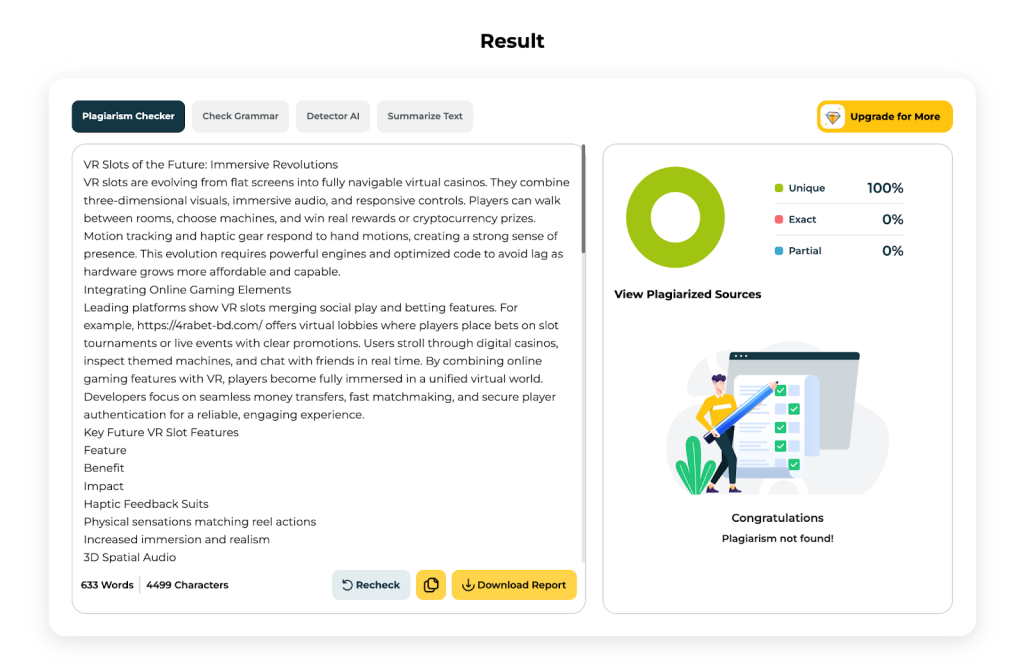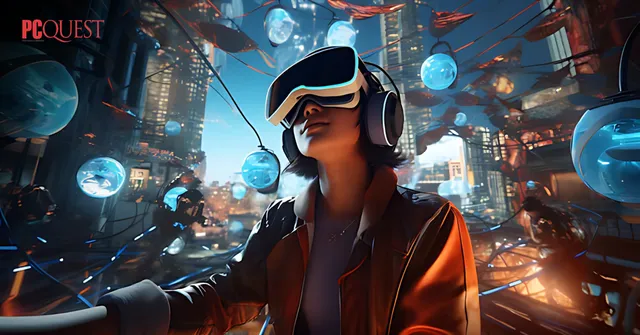VR slots are evolving from flat screens into fully navigable virtual casinos. They combine three-dimensional visuals, immersive audio, and responsive controls. Players can walk between rooms, choose machines, and win real rewards or cryptocurrency prizes. Motion tracking and haptic gear respond to hand motions, creating a strong sense of presence. This evolution requires powerful engines and optimized code to avoid lag as hardware grows more affordable and capable.
Integrating Online Gaming Elements
Leading platforms show VR slots merging social play and betting features. For example, https://4rabet-bd.com/ offers virtual lobbies where players place bets on slot tournaments or live events with clear promotions. Users stroll through digital casinos, inspect themed machines, and chat with friends in real time. By combining online gaming features with VR, players become fully immersed in a unified virtual world. Developers focus on seamless money transfers, fast matchmaking, and secure player authentication for a reliable, engaging experience.
Key Future VR Slot Features
| Feature | Benefit | Impact |
| Haptic Feedback Suits | Physical sensations matching reel actions | Increased immersion and realism |
| 3D Spatial Audio | Directional sound cues for machine mechanics | Better presence and situational awareness |
| Eye-Tracking Input | Control reels and menus with gaze | Seamless interaction and reduced controller use |
| Adaptive Environments | Surroundings change based on performance | Personalized experiences and replayability |
| Social VR Lobbies | Virtual meeting spaces for players | Enhanced community engagement and retention |
Enhanced Sensory Immersion Features
Developers integrate these features to increase realism and engagement:
- Haptic Feedback Suits — Simulate reel vibrations and jackpot rumbles for physical immersion.
- 3D Spatial Audio — Place sounds in space so players locate machines by auditory cues.
- Motion Tracking Sensors — Capture full-body movements to interact naturally with slots.
- Temperature & Wind Simulation — Convey environmental effects like a breeze in a beach-themed casino.
- Adaptive Lighting & Weather — Change in-game lighting and weather based on player performance.
- Multi-Sensory VR Equipment — Employ scent diffusers and directed airflow systems to achieve unparalleled realism.
Eye-Tracking and Seamless Control
Modern VR slots use eye-tracking to let players control actions with their gaze. Players select games, spin reels, or open menus by looking at targets on screen. This hands-free method reduces hand strain and speeds up navigation. Developers also gather engagement data to tailor offers and adjust difficulty. Combined with voice commands and gesture support, gaze-based controls make VR slots accessible and intuitive for many users.
Social VR Lobbies and Community Interaction
Social VR lounges unite players’ avatars within shared virtual spaces. Friends meet around slot machines, share bonus rounds, and celebrate wins with virtual confetti. Studios host live events like timed tournaments, holiday themes, and leaderboard challenges. These communal experiences build engaged communities and motivate repeat visits. By integrating chat, voice, and gesture support, VR slots become social hubs that combine gameplay with friendly competition.
Ensuring Player Well-being
VR slot developers emphasize user comfort and safety to reduce fatigue and motion sickness. Games include guided tutorials that explain controls and optimal motion settings. Automatic break reminders prompt players to rest when sessions run long. Configurable comfort settings allow users to adjust their field of view and movement speed. Real-time analytics detect unusual play patterns and suggest timeouts or tips. By balancing excitement with safety, VR slots support responsible play and long-term well-being.
Broader Accessibility and Future Outlook
As VR headset prices fall and designs improve, VR slots will attract larger audiences. Cross-platform previews let users test games in 2D before entering full VR. Cloud streaming will reduce hardware demands, making high-end graphics available on simpler headsets. AI-driven recommendations will suggest games based on individual preferences and history. Blockchain features may enable transparent payouts and digital asset ownership. Social VR marketplaces will let players buy, trade, or gift in-game items. VR slots of tomorrow will blur lines between reality and game worlds.



